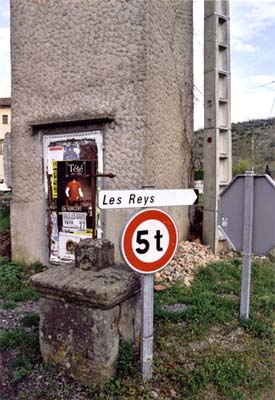|
RECENSION 15 / REVIEW 15
THE RELEVANCE OF AGRICULTURAL DRY STONE VESTIGES
Michel Rouvière, L’importance des aménagements en pierre sèche dans l’esthétique du paysage ardéchois [The relevance of agricultural dry stone vestiges in the aesthetic appeal of Ardéchois landscapes], in Paysages d’Ardèche, La terre, la pierre et l’eau, Mémoire d’Ardèche – Temps Présent, N. 82, May 15th, 2004, p. 51-73 (review by Christian Lassure) Being city dwellers, the majority of our contemporaries cannot but endow with aesthetic qualities the agricultural dry stone vestiges they come across in their birth places, holiday resorts or retirement places, as opposed to the concrete, tarmac, metal and right-angled structures of their urban environment. One cannot help thinking it cannot be otherwise, seeing the revealing photos of agricultural dry stone constructions, adorned with quaint literary or poetic excerpts, that ethnologist Michel Rouvière has patiently amassed over the last three decades in the Ardèche's Southern reaches. However, to the specialist of rural history, there can be no doubt that the originators of these constructions were motivated solely by economic concerns and practical considerations and never contemplated being "landscape builders", contrary to what some geographers would like us to believe. At the very most, these builders may have been aware of benefiting from some agricultural advance. If one turns to a 1912 report published by the "Société d'encouragement pour l'industrie nationale" (Society for the advancement of national industriousness), and in particular to the endeavours by one Louis Roussel, an agriculturist on the Gras de Joyeuse plateau, to transform an uncultivated slope into a series of agricultural terraces, one realizes that Roussel's main concern was simply to build terraces that would yield something, while following the rules of masonry, being himself a part-time stone mason. So let us not be mistaken: where the sophisticated city dweller of today sees a picturesque wall of rough stones arranged in a fishbone pattern, a 19th-century mason would have seen a paltry wall made of stones hardly suited for the job and falling far short of professional stonework. Being fully aware of that, Michel Rouvière warns us in the very first page of his catalogue: "Before indulging in an aesthetic approach, it would be wise to keep in mind these were functional, practical and essentially agricultural constructions". By waxing ecstatic over the beauty of terraced landscapes, one runs the risk of encouraging the multiplication, in their midst, of fastidious and costly artefacts by practitioners of "land art" under the guise of "contemporary enhancing" of dry stone vestiges. Let us rest assured, however, that Michel Rouvière, after contributing to making Ardechois terraces known to a wide public, will manage to defend them from the assaults of the instigators of "Terrace-Land".
Postal address of Mémoire d’Ardèche – Temps Présent : BP 15 07210 CHOMERAC. Price of issue 82 : 12 euros. To print, use landscape mode © CERAV To be referenced as : Christian Lassure
page d'accueil sommaire recensions sommaire articles en anglais
|

